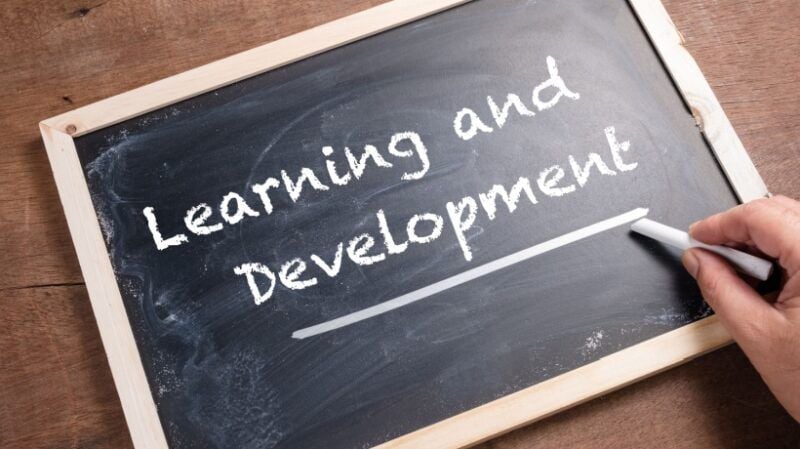
The New Period Of L&D: The Heart Hasn’t Changed
Allow me share something I have actually been seeing up close: Discovering and Advancement (L&D) isn’t simply advancing, it’s transforming at a speed a lot of us have not experienced prior to. Think about it. 5 years ago, we were discussing on-line learning as a support group. Today, it’s the backbone of just how companies reskill, preserve, and encourage their labor force. Duties are changing, abilities are frequently being redefined, and development plans look nothing like the ones we built a years ago.
As an L&D specialist, I commonly hear leaders ask: “What are the most useful developments I can try for my workforce? Exactly how do I even know what abilities to prioritize?” If you have actually been duke it outing these inquiries, you’re not the only one. Allow’s unload what’s taking place and where you can focus your power.
1 From Task Duty To Skills: The Shift That Modifications Every Little Thing
We used to make finding out around fixed task summaries. Today, work does not fit nicely into those boxes anymore. Organizations are moving towards skills-first techniques. Why? Since abilities are real money of development.
- Ability taxonomies and structures (like those constructed into modern LMS platforms) are aiding services recognize what’s missing out on today and what will be vital tomorrow.
- Interior ability markets are arising, where staff members are matched to projects based upon abilities instead of job titles.
- For you as a leader, this suggests reskilling isn’t a side task; it’s your toughest retention method.
2 AI Is Below, Yet It Demands Guardrails
AI is no longer advanced; it’s already inside your LMS and discovering method, nudging students with customized referrals. And when done right, it seems like magic.
- Personalized paths
AI evaluates learner habits and suggests programs lined up with career goals. - Time-saving automation
Admin tasks like registration, reporting, and responses loops are coming to be simpler. - Skill presence
AI-powered control panels offer leaders clearness on workforce readiness.
Yet below’s my care: AI is just as strong as the information and governance behind it. Be curious, experiment, however also ask vendors difficult questions regarding transparency, prejudice, and information safety and security.
3 Skills-Based Discovering Meets Human-Centered Design
While innovation can scale, human-centered style makes it stick. The advancements I’m most thrilled about are the ones that blend technology with empathy:
- Microlearning and nudges
Little, just-in-time ruptureds of understanding that regard students’ hectic schedules. - Learning in the circulation of work
Combinations with MS Teams, Slack, or CRMs where employees currently invest their time. - Career-linked learning
Development prepares that straight link skills learned to promos or brand-new chances.
These aren’t just “nice-to-haves.” They’re coming to be expected.
4 Immersive Discovering Is No Longer An Experiment
Online Reality (VIRTUAL REALITY) and Increased Fact (AR) were once buzzwords. Today, they’re useful tools, along with much-utilized simulations, scenario-based understanding, and gamification, particularly for remote and international groups.
- Picture a frontline employee practicing safety and security protocols in virtual reality, risk-free.
- Or a brand-new supervisor stepping into a gamified simulation to exercise leadership conversations.
These immersive techniques raise retention and self-confidence, especially in high-stakes functions. And fortunately? Expenses are lowering, making them much more attainable for a wider variety of organizations.
5 Partnership Is The New L&D Superpower
Below’s the truth: in the new era, L&D can’t be successful in a silo anymore. One of the most impactful programs I’ve seen were born from strong collaboration in between HR, IT, and business leaders.
- Human resources gives the lens of skill and society.
- IT guarantees systems incorporate effortlessly.
- Magnate connect learning to approach and growth goals.
When these voices come together, learning ends up being a company driver, not just a HR function.
If You’re Not sure Concerning Skills Or Priorities, Begin Here
Many leaders tell me, “I’m not even clear about which skills matter the majority of.” That’s entirely reasonable. The landscape in this brand-new period of L&D is loud. Right here’s a straightforward technique I recommend:
- Listen to your organization strategy
What’s altering in your market, item, or customer expectations? - Consider your workforce information :
Where are people leaving? Which teams are struggling? - Beginning small with pilots
Choose one location, like digital fluency, leadership readiness, or consumer experience, and run a concentrated program. Step, find out, scale.
Bear in mind: you do not have to do every little thing at the same time. Even little, deliberate actions can create huge surges in society and performance.
Last Thought: The Heart Of L&D Hasn’t Changed
Yes, the devices, duties, and approaches are shifting dramatically. Yet at the heart of it, even the new age of L&D is still about opening human possibility. As CLOs and L&D leaders, our work is to develop settings where individuals feel qualified, supported, and motivated to expand. Whether via AI-driven customization, immersive simulations, or simply better discussions in between supervisors and groups, the objective stays the exact same: to help individuals grow to ensure that companies can grow.
If you wonder about which technologies can work best for your workforce, begin checking out. Try something tiny, determine the effect, and do not hesitate to repeat. Due to the fact that in 2025, one of the most successful L&D leaders will not be the ones that did whatever, they’ll be the ones that relocated with intention.